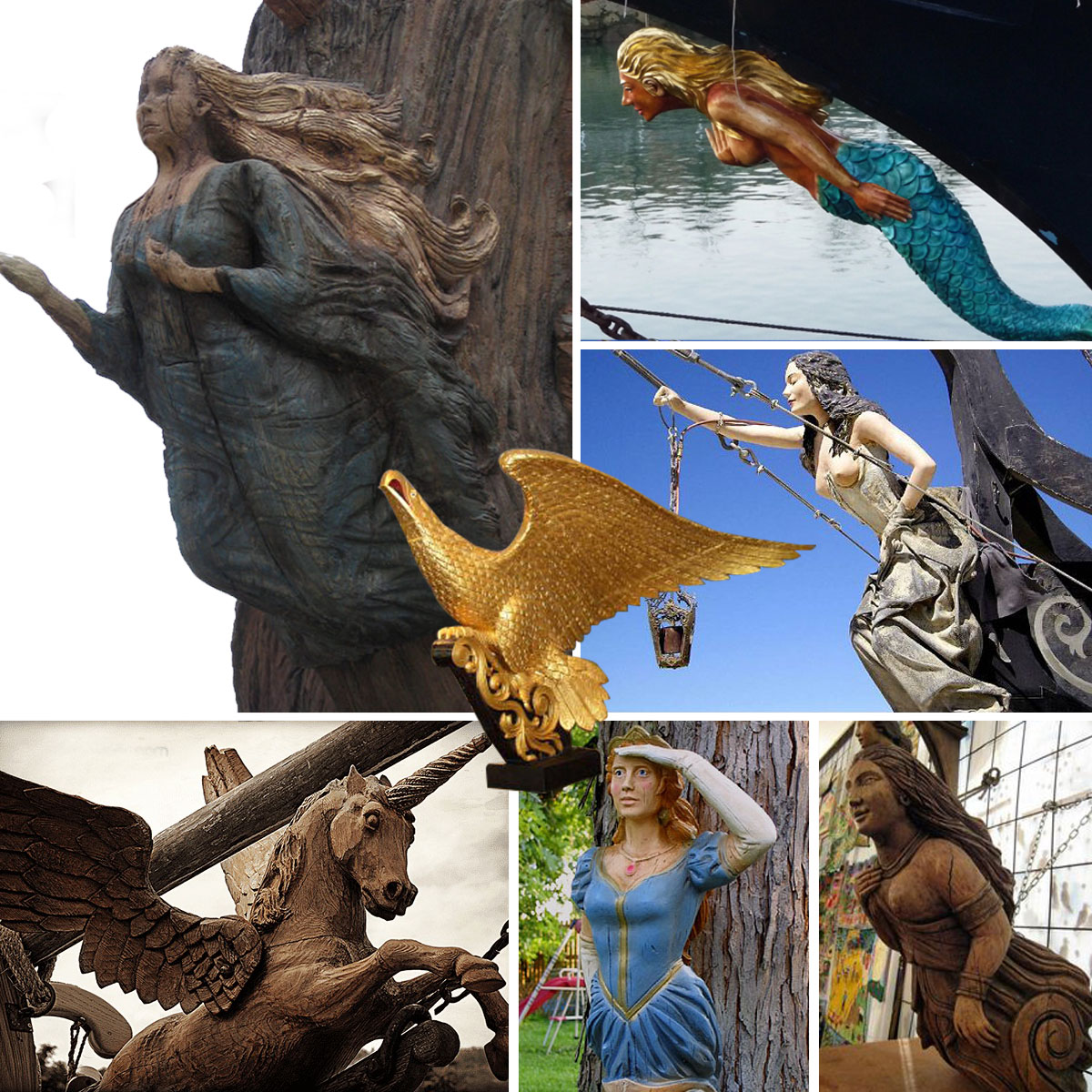A figurehead is a carved wooden decoration found at the prow of ships largely made between the 16th and 20th centuries.
Although earlier ships often had some form of bow ornamentation, the general practice was introduced with the galleons of the 16th century.
Prior to the 16th century figureheads on Viking ships had the protective function of warding off evil spirits. The Egyptians placed figures of holy birds on the prow while the Phoenicians used horses representing speed. The Ancient Greeks used boars’ heads to symbolize acute vision and ferocity while Roman boats often mounted a carving of a centurion representing valor in battle. In northern Europe, serpents, bulls, dolphins and dragons were customary and by the 13th Century, the swan was used representing grace and mobility.
The purpose of the figurehead was often to indicate the name of the ship in a non-literate society, and, in the case of naval ships, to demonstrate the wealth and might of the owner. At the height of the Baroque period, some ships boasted gigantic figureheads, weighing several tons and sometimes twinned on both sides of the bow.
A large figurehead, being carved from massive wood and perched on the very foremost tip of the hull, adversely affected the sailing qualities of the ship. This, and cost considerations, led to figureheads being made dramatically smaller during the 18th century, and in some cases they were abolished altogether around 1800. After the Napoleonic wars they made something of a comeback, but were then often in the form of a small waist-up bust rather than the oversized full figures previously used. The clipper ships of the 1850’s and 1860’s customarily had full figureheads, but these were relatively small and light.
Today they are much sought-after nautical antiques, and conservators and historians the world over are attempting to find and restore these artifacts. If you find one in an old shipyard, antique store or at a random estate sale – buy it. They are very valuable and will sell well at auction.
Replicas are also in demand. If you are an artist or talented woodcarver, there is definitely a robust market for works like these.




